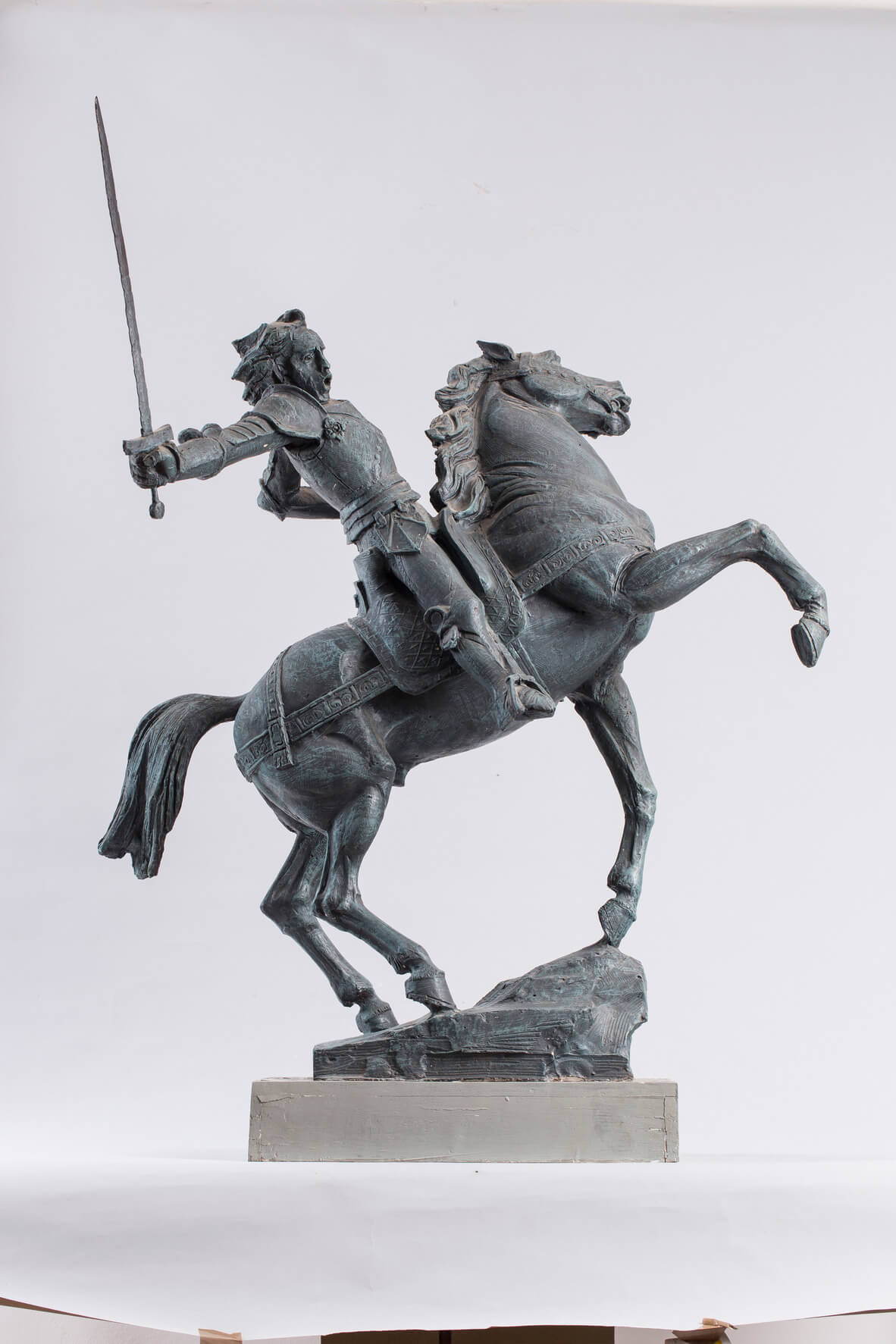Matejko
The Jan Matejko monument was sculpted by the artist with the intention of placing it in the urban space of Krakow, but this idea was not fully realized. Due to difficulties related to the location of the monument, the professor placed this sculpture next to his own studio and it is a kind of "landmark" of the place and today a museum. Jan Matejko was a role model for Konieczny and he was always guided by the desire to honor the great artist who created timeless historical monuments from the history of Poland. He funded and personally created a similar monument in Warsaw, which we can admire in the park at Puławska Street, near Morskie Oko Street, in the Mokotów district of Warsaw. Here in Salwator there is a second version of this monument, inviting you from the entrance to the Sculpture Garden.
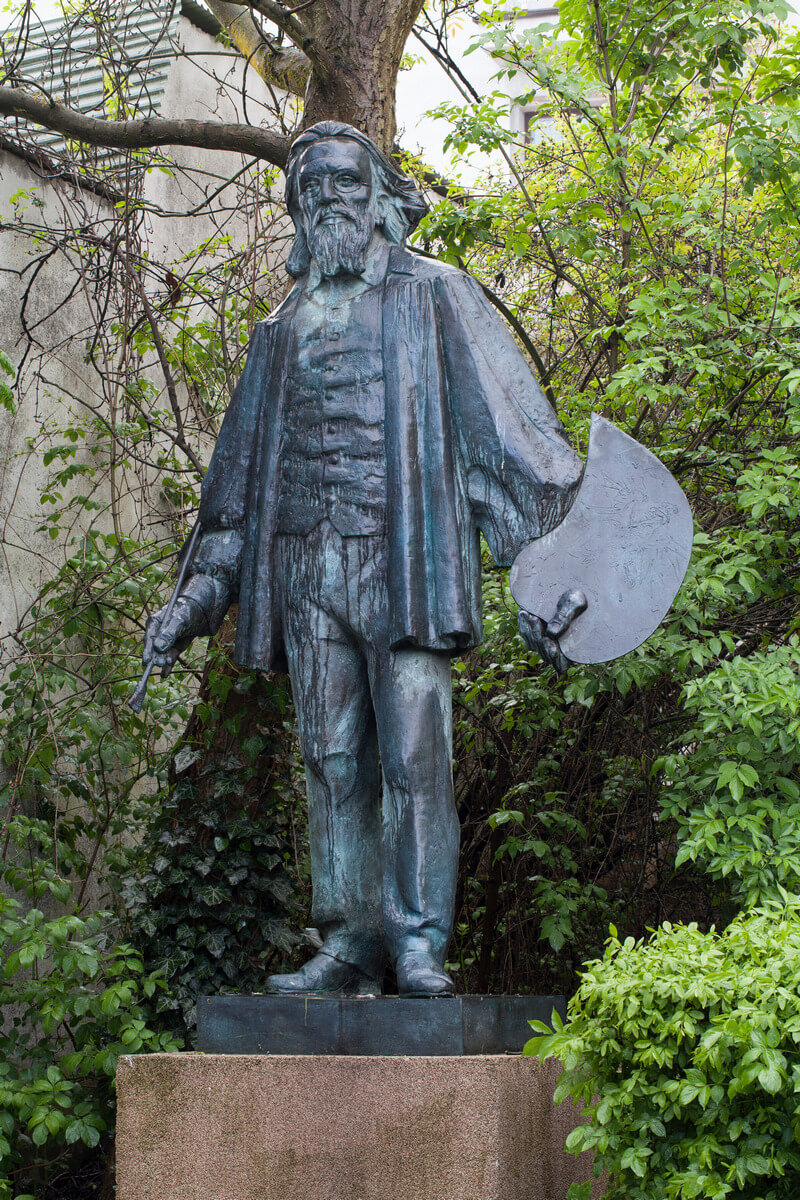
Autoportret
Sculpting and painting a self-portrait are two completely different things. In sculpture we are dealing with a three-dimensional view that is virtually impossible to achieve on a plane. When creating it, the artist based his work on his own mirror image and used photos. He often had to deal with monument tasks where he also had to use photography. As he said, it is very difficult because the real person being portrayed and posing has a specific facial expression and behavior typical of him, and this helps a lot in capturing the similarity. It's a certain tilt of the head, something in the posture, something we call body language. Unfortunately, individual photos do not always reflect this aspect of the character of the people portrayed.
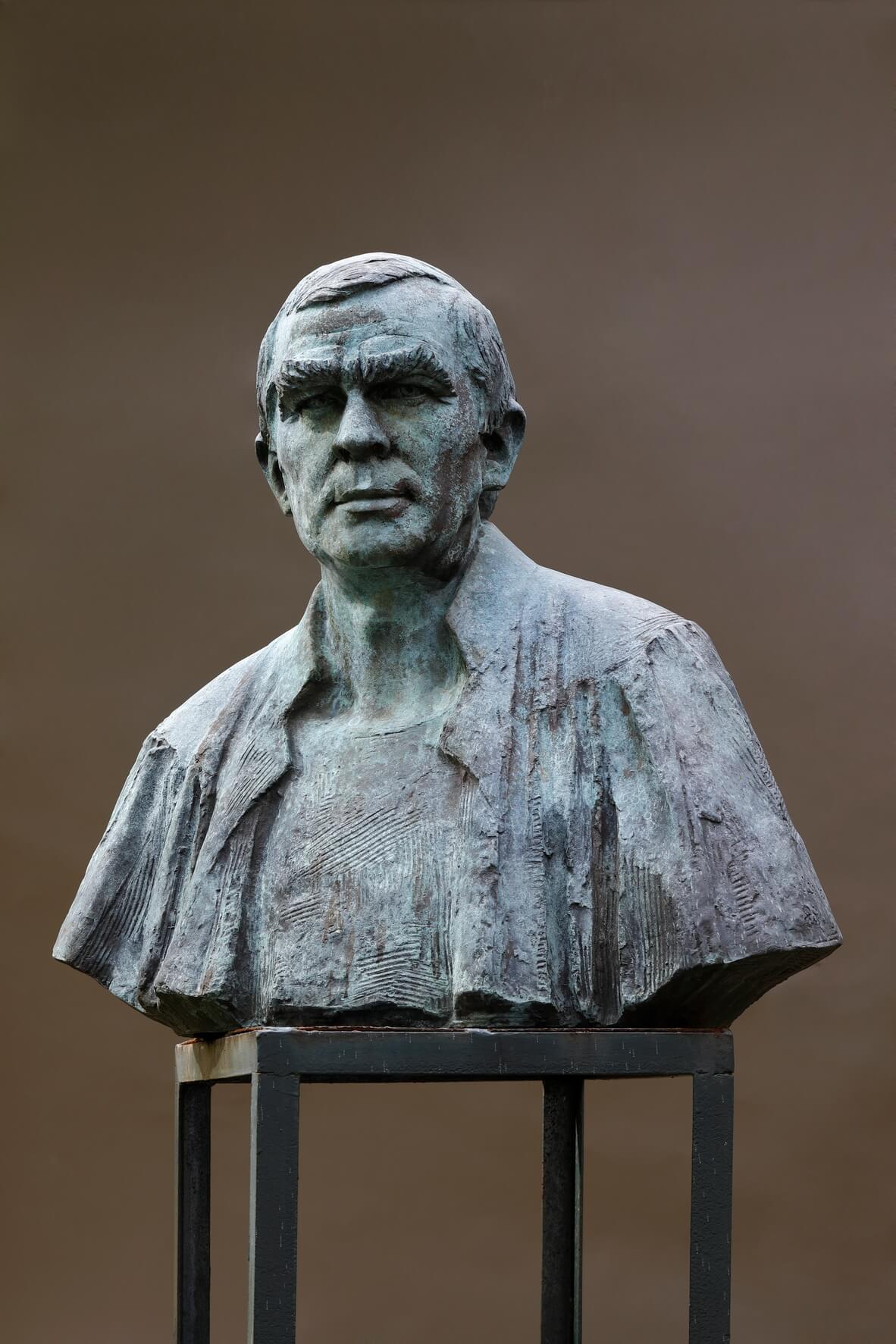
Zagremma
Zagremma Konieczna (maiden name Sakunawa)
The artist's first wife, whom he met while a student at the Yefimovich Riepin Institute of Painting, Sculpture and Architecture.
The Institute, as its name suggested - said Marian Konieczny - also included the Faculty of Architecture: "In my opinion, it's a good combination and it's a pity that architecture was later included among polytechnic faculties. I say this not because Zagremma was studying architecture, because we never met. in the library or anywhere at the university, only at Saturday dances. I really liked dancing, she danced great, you could say that we danced together."
The sculpture was created in the second half of the 1980s, a few years before Zagremma's death in 1988.
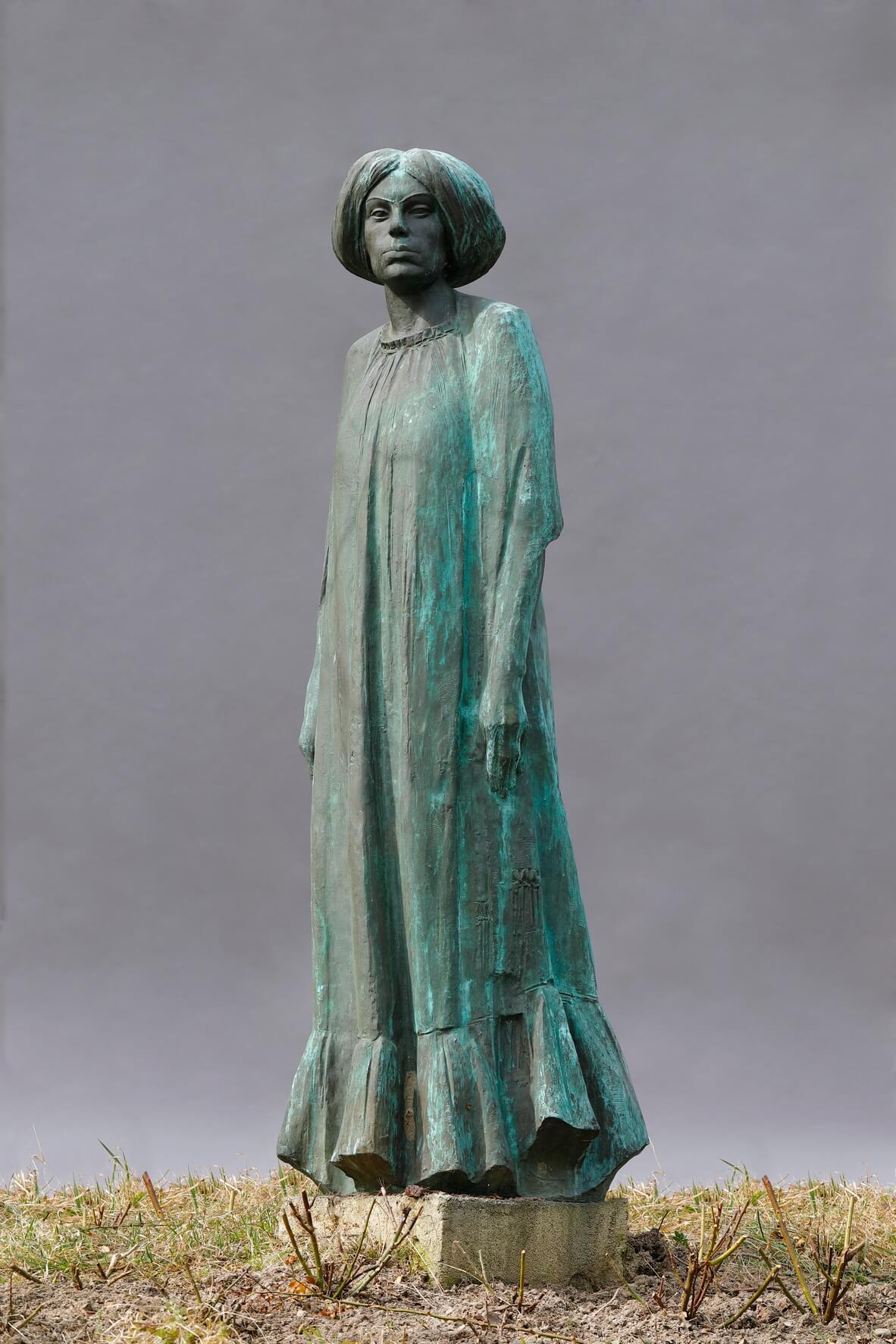
Maryla
Maryla Sarnik-Konieczna - portrait made in the early 1990s.
Since 1990, the artist's second wife, whom he met during his social and political activities during his participation in the Sejm in the 1970s. Architect, member of the Association of Polish Conservators, activist for the protection of Zamość monuments, initiator of the permanent exhibition of the artist's sculptures in Zamość.
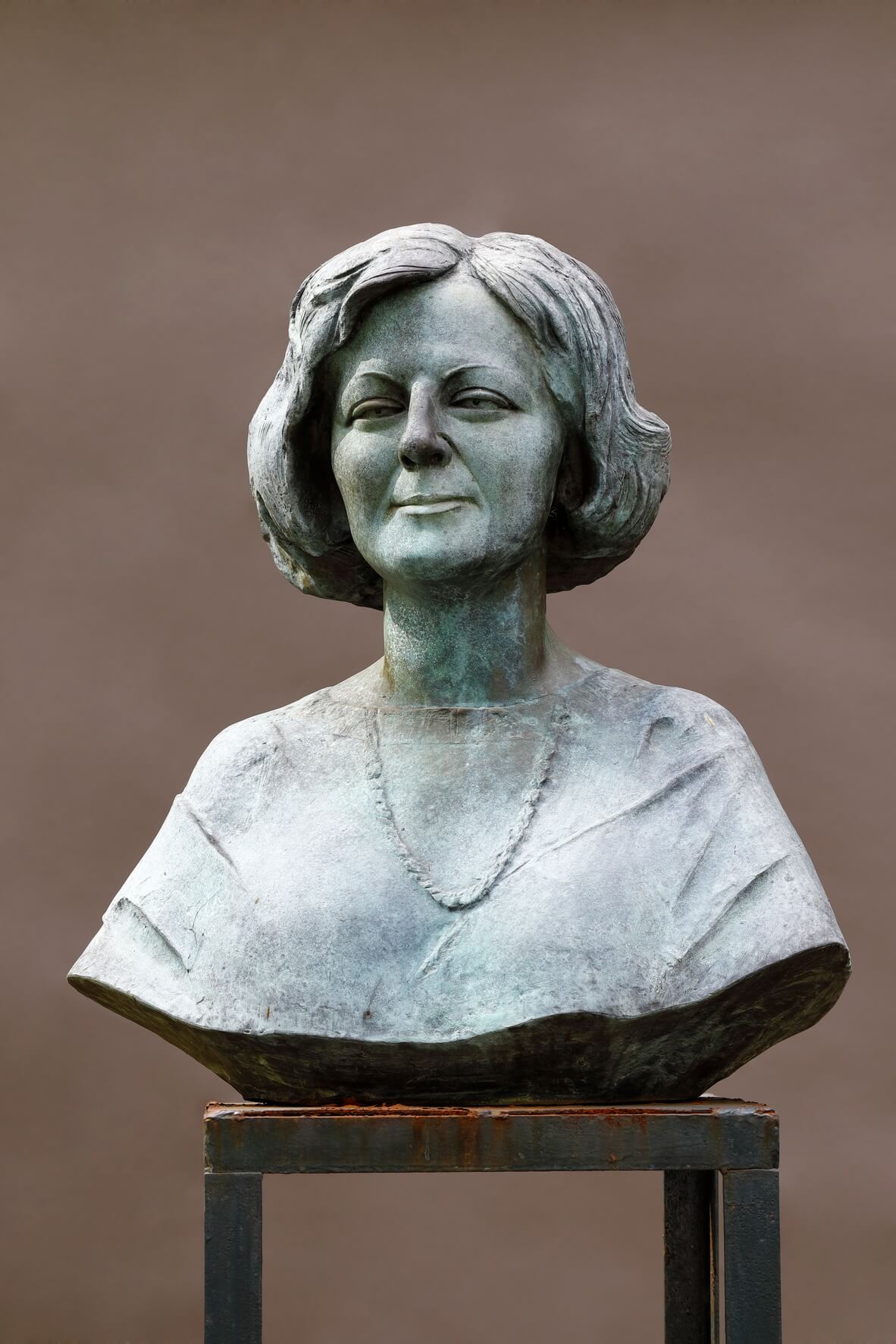
Filip
Filip Konieczny - the artist's son, bust made around 1988, right after Zagremma's death. Currently, he runs the Marian Konieczny Institute of Art Foundation, the initiator of the creation of the Sculpture Garden.

Dedal i Ikar
- Daedalus and Icarus - comments Professor Konieczny - "haunted" me since junior high school, when I first read Ovid's poem written in beautiful hexameter: "Omnia posideat non posideat area Minos, "Minos had everything except air". How to fly, how how to get out of slavery, how to strive for freedom. Freedom from imposed authority? The force of gravity? I don't know, I can't pinpoint it. Maybe the motif of rise and fall is more important than freedom itself. I see falls and rises in all my works.
Not only me, every creator notices them. He starts doing something, flies up, then looks critically at his work and falls, but then gets up again. That's the thing. In every artistic work there is its author with all his possibilities and skills, but also with all his failures. Because imagination will always be more perfect than the implementation itself. Thought is volatile, realization is material. The act of creation is the process of bringing the imagination closer to the created work. They say that inspiration helps here - that is, a moment when a sudden subconscious connection of dexterity and manual skills, professional knowledge and feelings takes place. I am very satisfied if during five hours of work I had a quarter of this so-called "creative excitement". The rest is purely craftsmanship (I am by no means insulting the craftsmanship, which guarantees the solid implementation of what was conceived in that quarter of an hour). I will also add that Icarus was the subject of many works of art. Daedalus was forgotten, I think I was the first to expose him in this way. Deliberately, after all, he was a fellow sculptor...
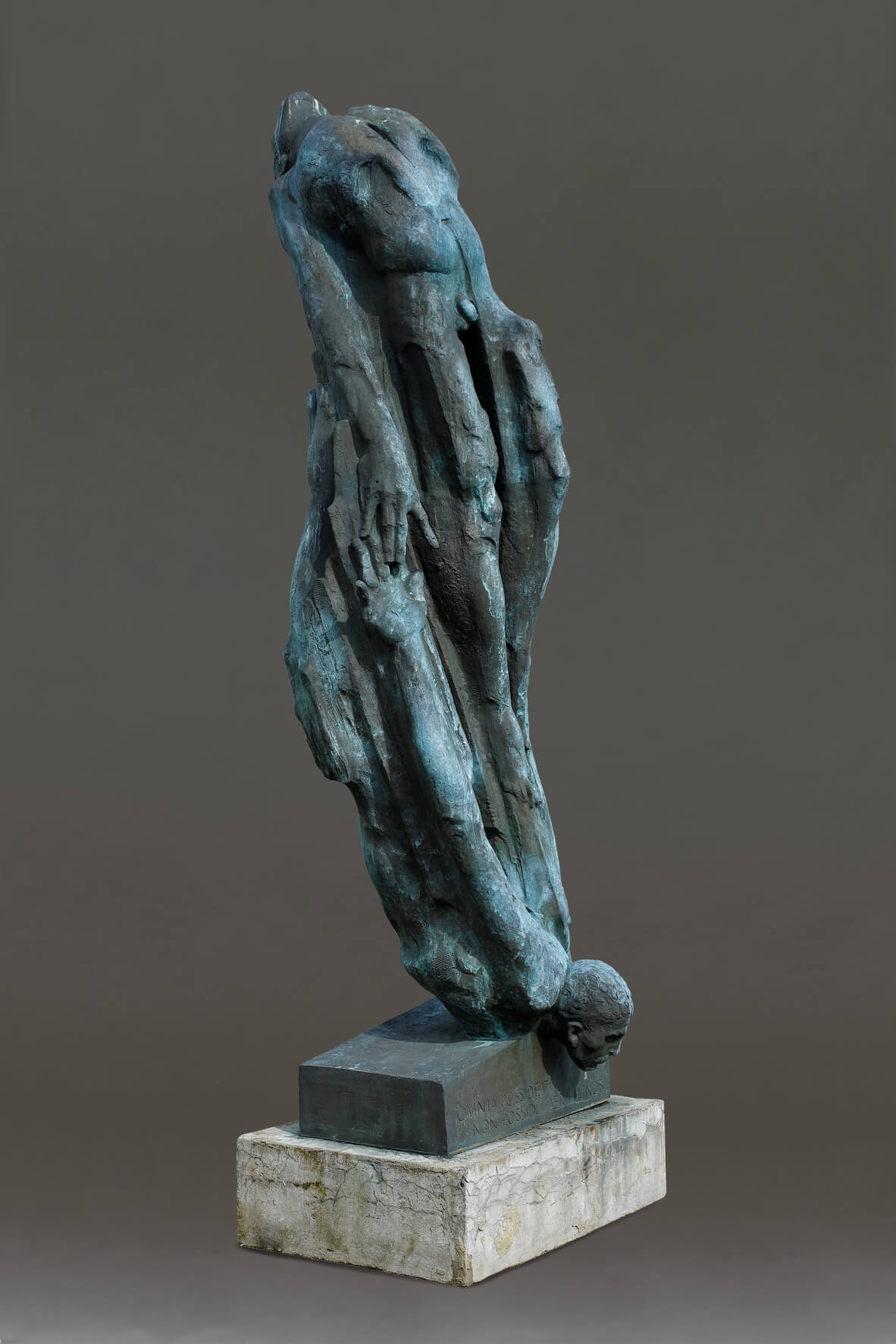
Stary Atleta
Old Athlete, a sculpture awarded with a silver medal at the Young Art Exhibition in Vienna in 1959. One of the works made during doctoral studies (aspirantura). Władysław Loranc aptly reviewed it many years later: "The Old Athlete, less spontaneous and aesthetic than the works of Auguste Rodin, is a more philosophical, more original and thoroughly personal sculpture, and above all, resistant to repeated contact with it, which is, after all, the most severe test for a work of art. "
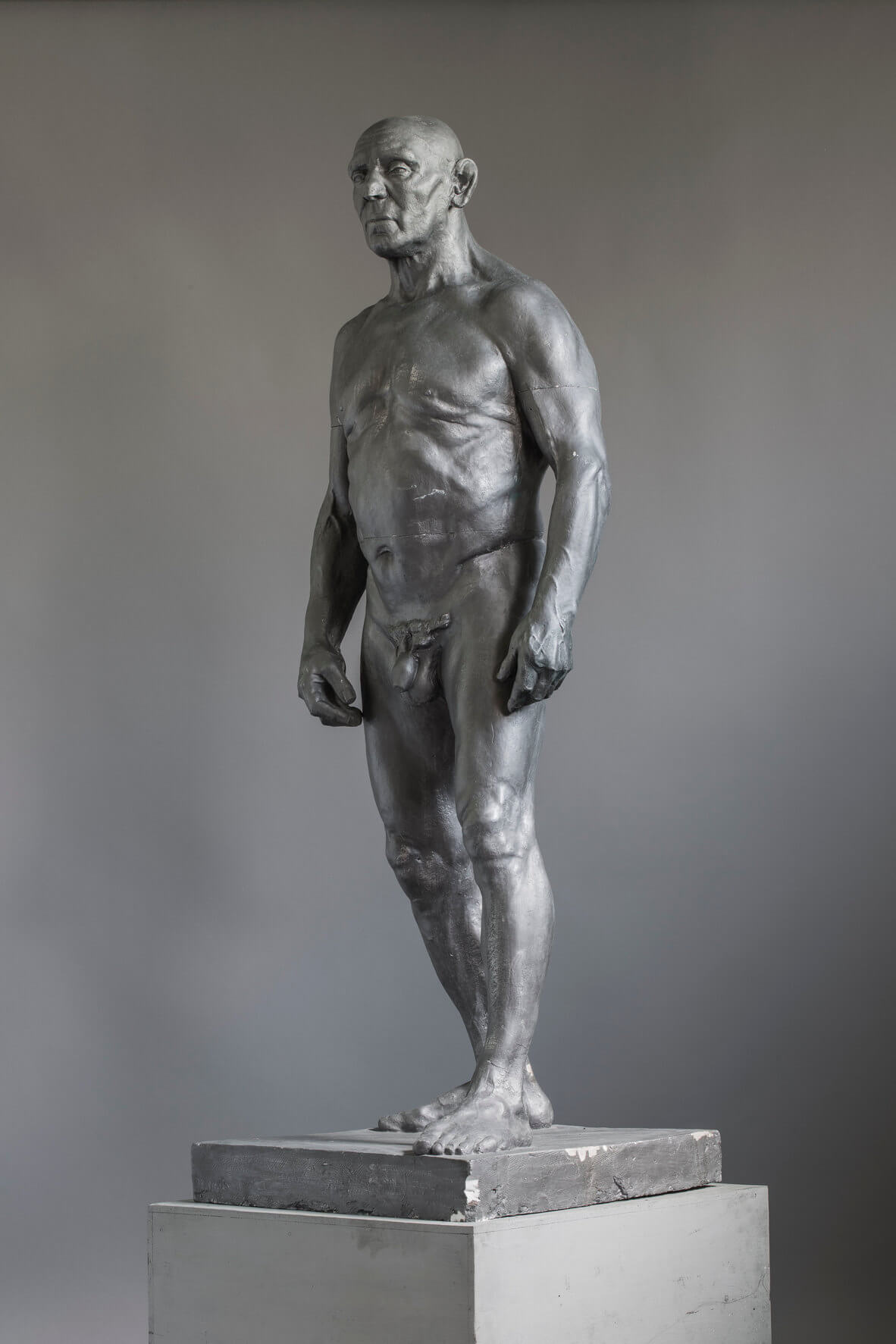
Chopin
Fryderyk Chopin, head - detail from the replica of the Chopin monument from Warsaw's Łazienki Park for the city of Hamamatsu in Japan. The Japanese, great fans of Chopin's music, wanted to have the same monument in their home. In 1992, they asked the artist to make a slightly smaller copy of the monument. And as in the case of the Grunwald Monument from Matejko Square in Krakow, its general shape is similar to the original, but it contains style features characteristic of Marin Konieczny.
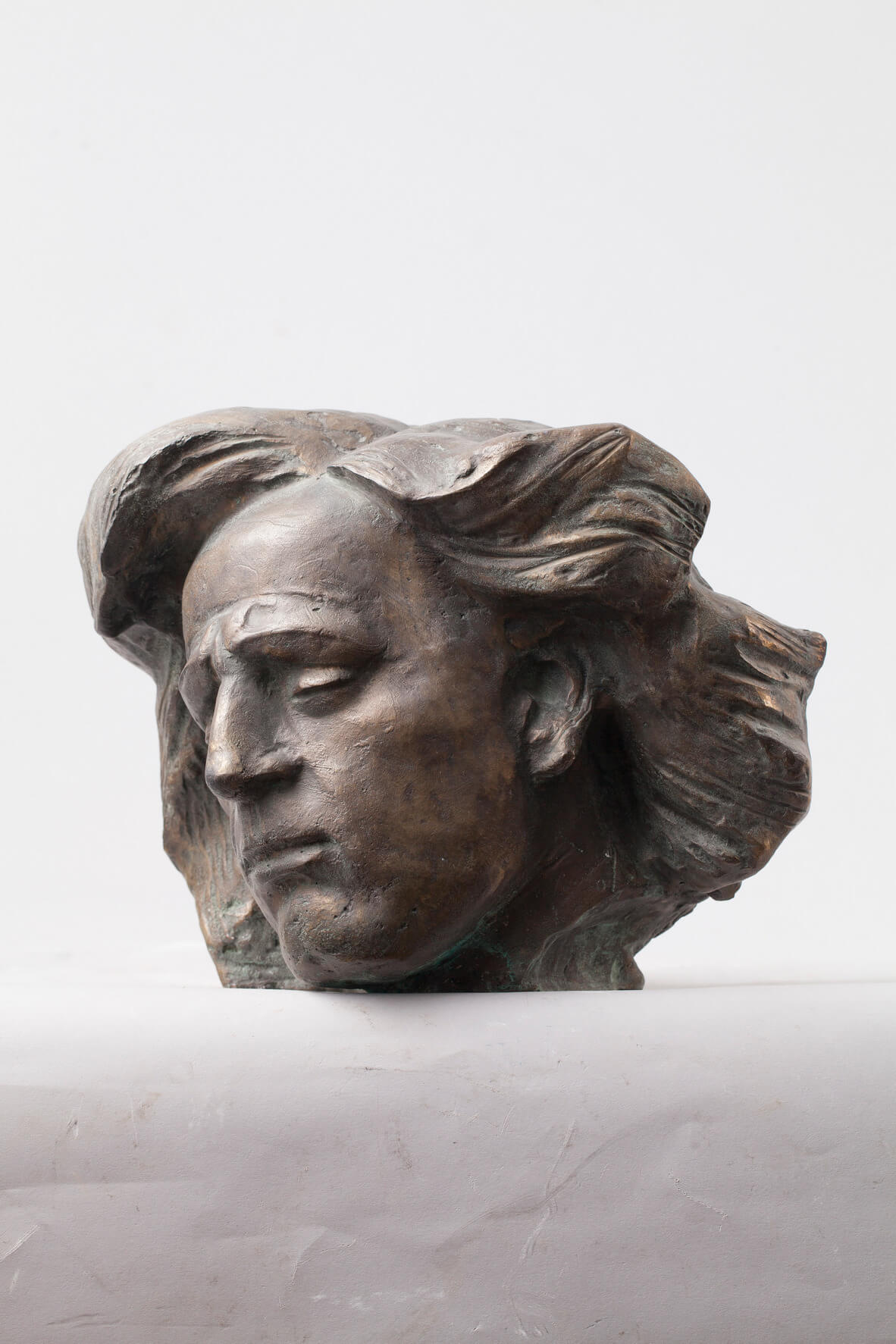
Macierzyństwo
The sculptures in the motherhood series were created in the 1960s. The one with hands containing the figure of a small child is the first in this series. It speaks for itself in its message and symbolism. It is both intimate and monumental. The series was created shortly after the birth of the artist's son.
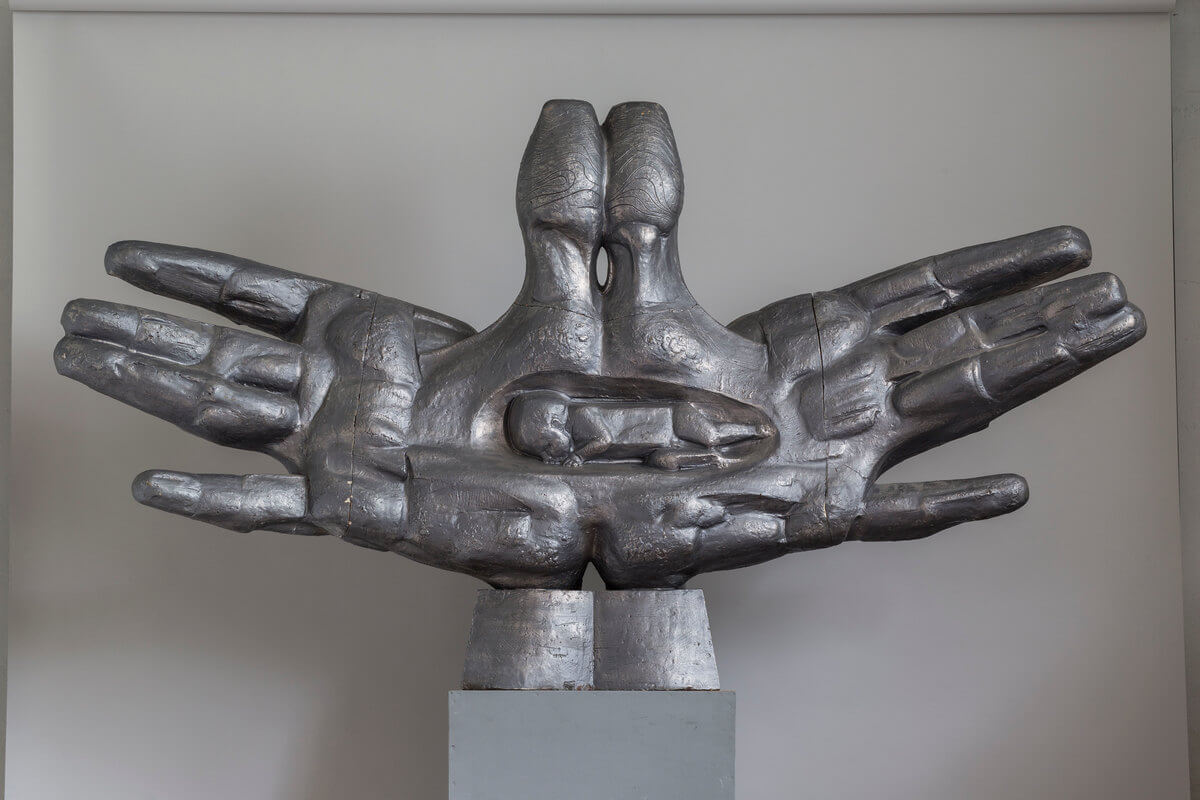
Macierzyństwo
The sculptures in the motherhood series were created in the 1960s. This is the second sculpture from this series, created at the same time as the first one, and, like the previous one, it does not need any commentary in its message. It "speaks" for itself. It is both a monumental sculpture but could also find its place in a closed but relatively spacious space.
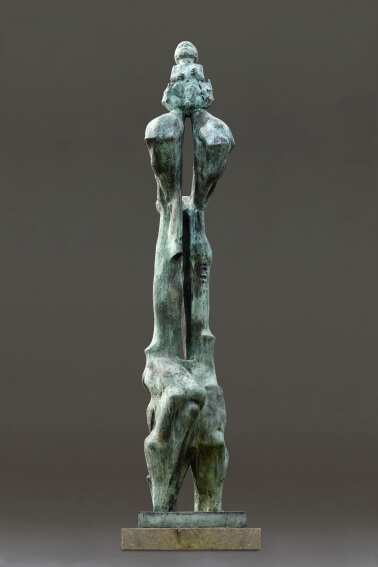
Wisła
An allegory of the Vistula River in the form of a dancing girl with a wreath on her head, referring to the tradition of "Wianki" on the Vistula. The artist's own composition may have had some purpose - that is, its place known only to the creator. Today we can only guess - on the bend of the Vistula near Wawel, where outdoor events - Wianki - are traditionally held during the summer solstice?
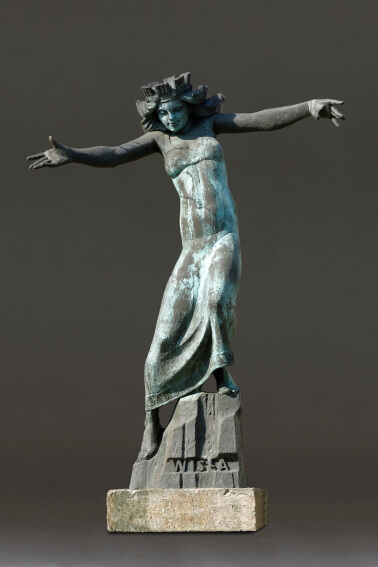
Matka Joanna od Aniołów
Mother Joanna of the Angels is a sculpture created for the set design for a theater play by Jarosław Iwaszkiewicz at the Słowacki Theater in Krakow. In addition to this work, which was the central object of the scenography, the artist made the entire set and designed the costumes for the play. It was the only such commission in his artistic career. The sculpture was initially made of resin so that it could hang safely above the stage. The sculpture currently presented in the garden was later recorded in bronze.
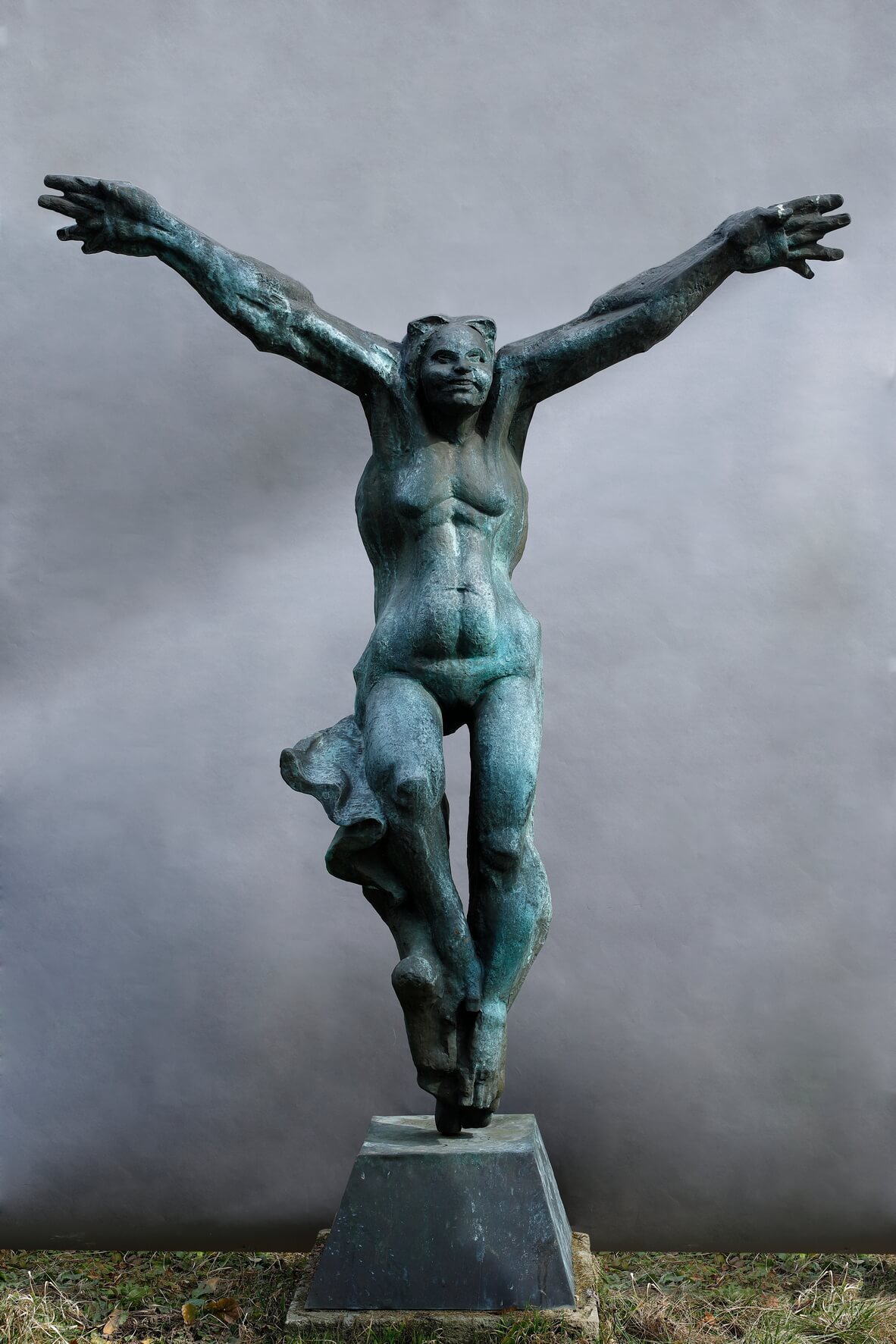
Warneńczyk
Warneńczyk - a model for the design of a monument that was to be erected in Varna, Bulgaria, where Władysław III (named after - Varna's), along with the Polish-Hungarian-Italian Christian coalition, was defeated by Turkish forces on the coast of the Black Sea. The idea for this monument was born in the 1970s, but it never came to fruition. In the 1990s, attempts were made to return to this idea, but the efforts to implement it came to naught. It's a pity because it is one of the author's best models of equestrian monuments.
